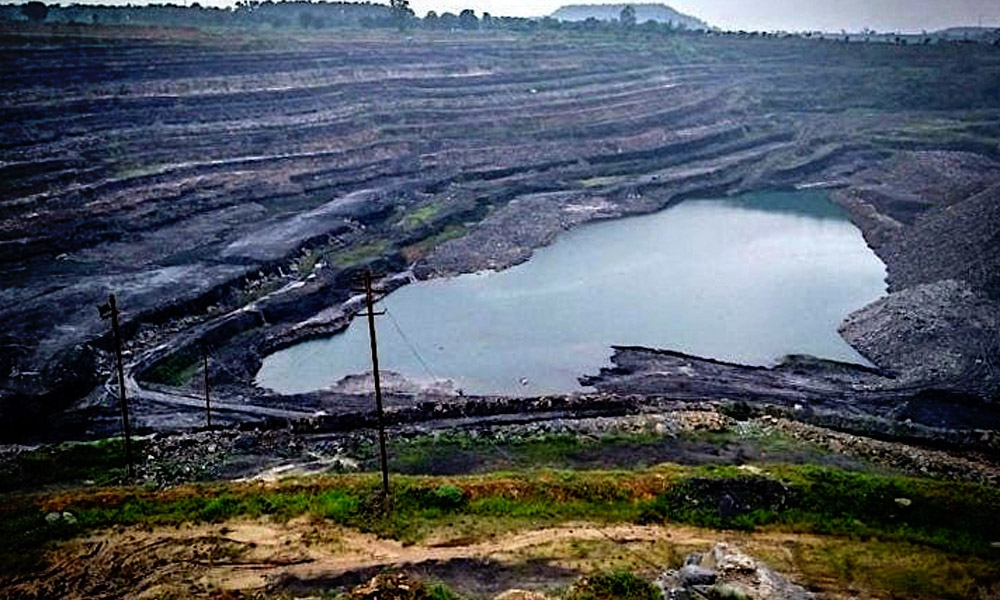
No Theory, Only Lived Experience: The Struggles Of Adivasi's Living In Coal Mining Areas
Chhattisgarh, 3 Oct 2020 6:21 AM GMT | Updated 25 Oct 2020 8:41 AM GMT
Creatives : Rajath |
A free spirit who find meaning in life with the virtue of creativity and doing job par its excellence, animal lover and traveller by heart.
The judicial and administrative systems have acknowledged the severe human costs of mining. However, their inaction in the matter only proves that the concept of environmental justice may exist in theory but not in practice and those fighting for it have a very uphill battle.
On the 27 of September last year over a thousand people in Tamnar, Raigarh district of Chhattisgarh had protested outside an environmental public hearing being organized by the Adani group who had secured a Mines Development Order (MDO) for the Gare sector II, the MAHAGENCO Coal mine.
The public hearing was allegedly being forcibly organized even when the local population had for the past few years vociferously demanded that no new mines be sanctioned in the region. Gram Sabhas in the region have passed several resolutions against the ongoing mining operations and also held demonstrations and protests. Over the past years, the local communities have also been protesting against the hazardous pollution caused by the mining operations being carried out in flagrant violation of environmental laws.P
The impacts on the lives, livelihoods, and health of the local communities have been brought to the notice of the authorities but to no avail. Air quality in the area has been found to contain fine particulate matter (PM2.5) between 200-400 ug-m3 (microgram per cubic meter) as opposed to the permissible standards of 60 ug-m3. Furthermore, studies have also revealed the presence of heavy metals and cancer-causing substances in the air, water, and soil. Added to that, a rapidly sinking groundwater table along with loss of forest cover and the rapidly deteriorating public health has driven people towards civil disobedience (rallies and roadblocks) even in the face of police backlash. Several community members have faced repression in the form of false cases and wrongful imprisonment.
The communities have also taken the legal fight for justice where they have sought relief on grounds of environmental/health damage and widespread violation of environmental laws by mining companies.
In March 2020, the National Green Tribunal imposed a penalty of Rs 160 crores on Jindal Steel and Power Ltd., and South Eastern Coalfields Ltd., for environmental damage, in the matter of Dukalu Ram & Others Vs Union of India. A case that went on for 6 years.
In a second case – the matter of Shivpal Bhagat & Others Vs Union of India, the NGT appointed a committee which visited the area and in January 2020. The committee made the following observations in its final report to the NGT.
"... The existence of these coal deposits has led to the setting up of a number of coal mines and coal-based thermal power plants in this region over the past two-three decade. In spite of the existence of multiple environmental regulations, these activities have generated and continue to generate a significant quantity of pollution in multiple forms."
The committee also acknowledged the toxic impacts of mining on air, water, and soil and its link to the severe groundwater depletion, loss of forest cover, and agriculture. The committee found the sheer scale and intensity of the impacts to be so bad that it was forced to conclude:
"Based on evidence summarised above, the committee is of the opinion that the Tamnar- Gharghoda block region is close to exceeding its environmental carrying capacity. However, the precise extent of current environmental load and the likely impacts of future mining and industrial activities has to be worked out through a detailed and comprehensive environmental load-carrying capacity study, to be carried out by a reputed environment research institute or a consortium of such institutes over a 24-month period."
The NGT accepted the recommendations of the committee and in its order dated 27th February 2020 observed:
"We are of the view that since serious deficiencies have been found and there is potential for damage to the environment as observed in the report, the 'Precautionary' and 'Sustainable Development' principles require that any further expansion or new projects in the area should be allowed after thorough evaluation only and mechanism for remedial measures should be in place, including oversight of measures for health mitigation."
While these are significant legal victories that instill a sense of hope among the communities, the subsequent inaction by state authorities has also demonstrated that good orders are not enough, the real battle lies in having them implemented and making the law work on the ground.
The companies have been delaying remedial action as directed by the NGT on the pretext of the COVID pandemic, but the mining activities continue as essential services. The NGT had also imposed a complete ban on the illegal dumping of fly-ash in low lying areas and directed the companies to clean up all existing ash dumps. There has been no action on that due to the COVID lock-down. Fly ash pollution has been linked with several upper and lower respiratory tract diseases and significantly contributed to PM2.5 pollution. Studies have also shown causal links between air pollution to elevated cases of COVID related mortalities.
Given the scientific links between COVID and air pollution, the fly ash dumps should be removed, and the impacted areas remediated on a war footing. Unfortunately, that is not how the administration works. Now the communities are left to fend for themselves and have to find ways of having the court orders and the laws of the land implemented especially at a time when civil liberties have been curtailed due to the COVID-related restriction.
To make matters worse, in September 2020, the government of India announced new coal mines to be auctioned. The list included three new mines from the Raigarh region – Dolesara, Jarekela, and Jharpalam-Tangarghat. The proposed sites lie in a region that is ravaged due to the ongoing pollution by existing mines and a few portions are still densely forested areas that stand threatened by this proposal.
Photo: Rinchin and Manshi Asher
12 Adivasi Sarpanches recently wrote to the environment minister asking why new mines from their region have been added to the commercial mining list when scientific data and the states own reports recommend a moratorium on mining in this region. The village leaders also demanded a stop on any new mines in this region and asked for the mitigation and restoration of the polluted land as directed by the NGT.
The experience of Raigarh has demonstrated that in the battle between environmental justice and economics, the latter has an upper hand. The judicial and administrative systems have acknowledged the severe human costs of mining. However, their inaction in the matter only proves that the concept of environmental justice may exist in theory but not in practice and those fighting for it have a very uphill battle. But for Adivasi communities living around coal mining, there is no theory only lived experience. And a fight for a clean environment that does not impact their health for generations is also a struggle to survive. This is best explained by an answer that one of the women gave to an official, who asked the question, why do you continue to struggle, the answer was –" Ladbo nahi to marbo"-"If we don't fight we die!" It is a struggle for survival.
About the author: Rinchin is a writer and activist based in Chattisgarh and Madhya Pradesh.
 All section
All section














